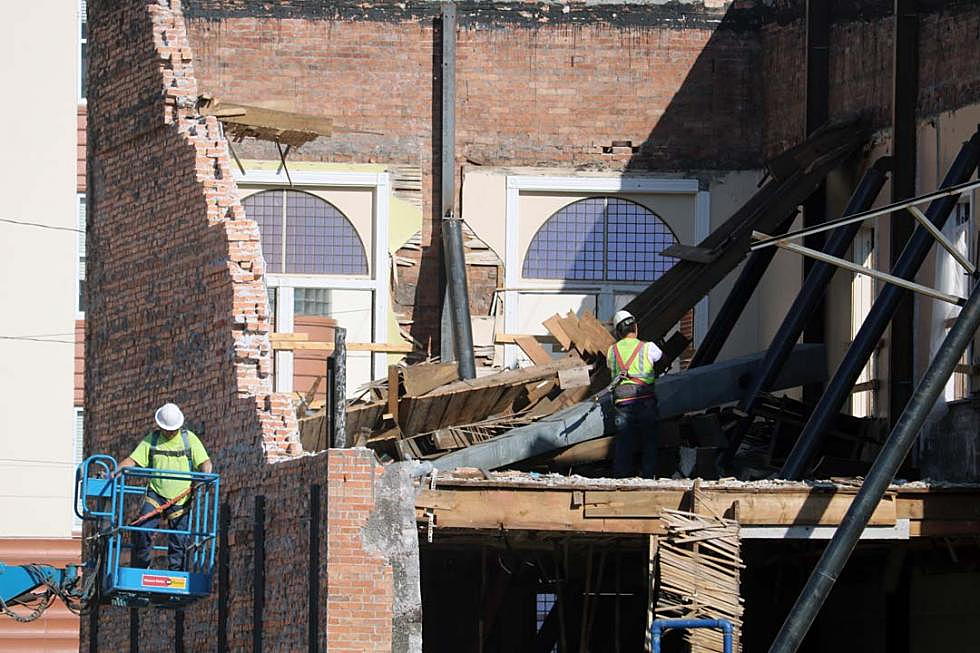
Missoula lodging taxes down, though tourism remains strong
While lodging tax revenue collected in Missoula County dropped 3 percent over the first quarter of 2017 and nearly 16 percent in the city proper, local tourism officials say visitation is stronger than ever, and they're attributing the unusual decline to delinquent hotel payments.
The Montana Office of Tourism and Business Development this month released the tax revenues collected through the state's so-called bed tax for the first quarter of 2017, showing a statewide increase of 5 percent.
That boost includes a 4 percent jump for the tourism region known as Glacier Country and its eight participating counties, including Missoula, Ravalli, Flathead and Lake.
“We're seeing that increased trend statewide,” said Daniel Iverson, the communications manager for the Montana Department of Commerce's tourism arm. “We haven't had a down year since 2009, and there was a pretty clear reason for that (the recession). The numbers are looking good.”
Through the first quarter of 2017, bed taxes collected in Missoula County topped $408,000. And while that marks a 3 percent decrease over the same quarter in 2016, it reflects the second strongest opening quarter dating back to the program's inception in 1987.
Bed taxes collected in the city also netted $290,000, though that marks a 16 percent decrease over the same quarter last year. The drop likely stems from delinquent bed-tax payments and doesn't reflect a drop in visitation, according to Barb Neilan, executive director of Destination Missoula.
“For something that big, it actually has to be one or two of our properties that are just late in their payment,” Neilan told the Missoula Current. “It's not a decrease in our visitation.”
Rather, Neilan said, the city's tourism economy is on the rise, as is digital traffic to Destination Missoula. The organization's website logged roughly 664,000 unique visitors last year compared to 559,000 the year before.
Residents in Utah, Washington, California, Texas and Oregon represented the top five inquiries, Neilan said.
“Texas is consistently in our top five, and sometimes it's in our top one or two,” Neilan said. “The air (revenue) guarantee is something we're working on very diligently with the Missoula Economic Partnership, trying to get that Texas flight here.”
As MEP works with American Airlines in hopes of landing nonstop service to Dallas/Fort Worth, more visitors are heading south to explore Missoula, Neilan said. Last year, the city drew more than 53,000 Canadian visitors compared to 43,000 the year before.
“That's a decent jump, but we're marketing more up into Canada now,” Neilan said. “We've seen some really great increase in the awareness of Missoula. That's usually our biggest challenge, getting people here for the first time. Awareness is something we've been working on.”
Neilan said roughly 85 percent of Missoula's first-time visitors return for a second time within two years. While the city may not be what some consider a traditional tourism destination, it's something her office is pushing to overcome through new advertising and social media.
And the effort appears to be working. Last year, Neilan said, visits to Destination Missoula's social media channels generated nearly 59,000 visits, an organic increase from 43,000 the prior year. The organization also released a promotional video last year, which generated 1.5 million page views.
Neilan said a film crew was on the ground this week shooting a new campaign for the coming year. The latest release will feature the city's new amphitheaters, the Missoula Art Park and other local attractions.
“We absolutely have premier outdoor recreation, but so does most of Montana,” she said. “When we're out selling Missoula, the thing that sets us apart is our accessibility to recreation. It's really easy to get to.”
Destination Missoula also is pushing the city's arts and burgeoning music scene. A new “Arts and Economic Prosperity” report, released last month by Americans for the Arts, found that the local industry generates more than $54 million in annual economic activity.
The figures place Missoula above the national average, both in the money spent by local arts and culture nonprofits, and money spent by the residents who support the organizations.
“It really shows you how unusual we are when you look across the nation,” Neilan said. “We do more with arts and fund more with arts than most cities do, and that's pretty phenomenal.”
Partial funding for tourism promotion comes from hotels across Montana, which are charged a 3-percent sales tax and a 4-percent bed tax for every room that's booked. While the sales tax goes into the state's general fund, the bed tax funds tourism, development and promotion.
A set amount of the bed tax is disbursed to the Montana Department of Revenue and the Montana Heritage Commission. Roughly 22.5 percent of the bed tax is shared by the state's six tourism regions, including Glacier Country.
Currently, Neilan said, Missoula has 46 hotel properties offering roughly 3,159 rooms. Those figures are expected to change as new hotels come online and old ones begin to drop away.
“Bringing on things like Fort Missoula Regional Park gives us the ability to bid on events we've never had the ability to do before,” Neilan said. “As you bring on bigger events, you need more rooms. It feeds each other and we're lucky to be in the situation we're in.”
In its Fiscal Year 2018 regional marketing plan, Destination Missoula named arts and culture, access to recreation, sports and entertainment as the city's tourism strengths, along with its shopping opportunities as a regional hub.
The challenges include air service, seasonality, group travel, parking and a lack of tourism infrastructure.
“We're marketing our music scene and working with the major venues with a micro website that tells people what's going on music wise,” Neilan said. “Our distilleries, wineries and breweries are big things too. People are traveling specifically for those niches. We hit so many of the really great things people are looking.”
